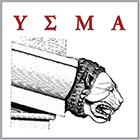This item is provided by the institution :
 Acropolis Restoration Service (YSMA)
Acropolis Restoration Service (YSMA)
Repository :
The Parthenon Frieze
| repositories EKT



 Temple
Temple







